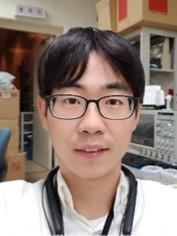
Han Gyu Kang
Coordonnées
Thèmes de recherche
Han Gyu Kang is a researcher at National Institutes for Quantum and Radiological Science and Technology (QST) in Japan since 2018 (https://www.nirs.qst.go.jp/usr/medical-imaging/imaging-physics/index-en.html#Member). Han Gyu has obtained his BS (2012), MS (2014), and PhD (2018) degrees at Eulji University in South Korea. Han Gyu’s research has been mainly oriented on the hardware development of medical imaging systems. He focused his research on the SiPM based time-of-flight (TOF) and depth-of-interaction (DOI) PET detector and preclinical PET/MR scanner during his BS and MS courses. He developed a novel multimodal laparoscope which can provide gamma, near-infrared (NIR) fluorescence, and visible images simultaneously for sentinel lymph node mapping during his PhD course. In addition, he first implemented an optical lens into GATE toolkit for more realistic optical imaging simulations such as bioluminescence, fluorescence, and Cerenkov luminescence imaging. Dr. Han Gyu won the award from the Deputy Prime Minister and Minster of Education of Korea because of his innovative idea (4 patents) and contribution (6 peer reviewed papers) to the medical imaging field during his PhD course.
After finishing his PhD degree in Korea, Dr. Han Gyu has joined Yamaya-lab at QST in Japan since April 2018. The main research topic of Han Gyu is the development of high-resolution small animal PET scanners using DOI detector. He modeled and developed various light sharing DOI detectors such as staggered 3-layer DOI detector, 4-layer DOI detector with special reflector patterns, and dual-ended readout DOI detector using trapezoidal crystal geometry. The GATE optical modeling results of those DOI detectors were validated with experimental studies leading to the development of several prototype preclinical PET scanners as presented in 2018, 2019, and 2020 Virtual IEEE NSS/MIC.
Dr. Han Gyu has expanded his research topics to the optical imaging of heavy ion beam in collaboration with Prof. Seiichi Yamamoto at Nagoya University. Their collaborative work was highlighted by “Physics World” in 2019 showing the potential of optical imaging for the cost-effective quality control of radioactive ion beams in HIMAC.
Since 2020, Dr. Han Gyu has joined the steering committee of the OpenGATE collaboration (www.opengatecollaboration.org) to make more contributions to the community of GATE. He was invited as a lecturer in a “GATE training course for beginner” held in Japan in 2020. Dr. Han Gyu has been actively using GATE for the modeling of preclinical PET, SPECT, x-ray CT, and optical imaging systems. He has presented his GATE simulation works on the GATE User’s Meeting (4 orals) and STIR User’s and Developer Meeting (1 oral). Dr. Han Gyu has been contributing to international conferences such as IEEE MIC (4 orals, 24 posters) and SNMMI (5 orals and 2 posters) as a presenter.
Recently, Dr. Han Gyu has devoted himself to the development of a submillimeter resolution preclinical PET scanner which can be combined with two-photon microscopy for mouse brain research. In parallel, he is investigating on a novel TOF-DOI PET detector using light sharing technique to achieve sub-3 mm DOI resolution and sub-200 ps coincidence timing resolution for whole-gamma-imaging (WGI) project in Yamaya-lab. Dr. Han Gyu is currently pursuing to develop novel radiation detectors and PET systems for high resolution molecular imaging.
